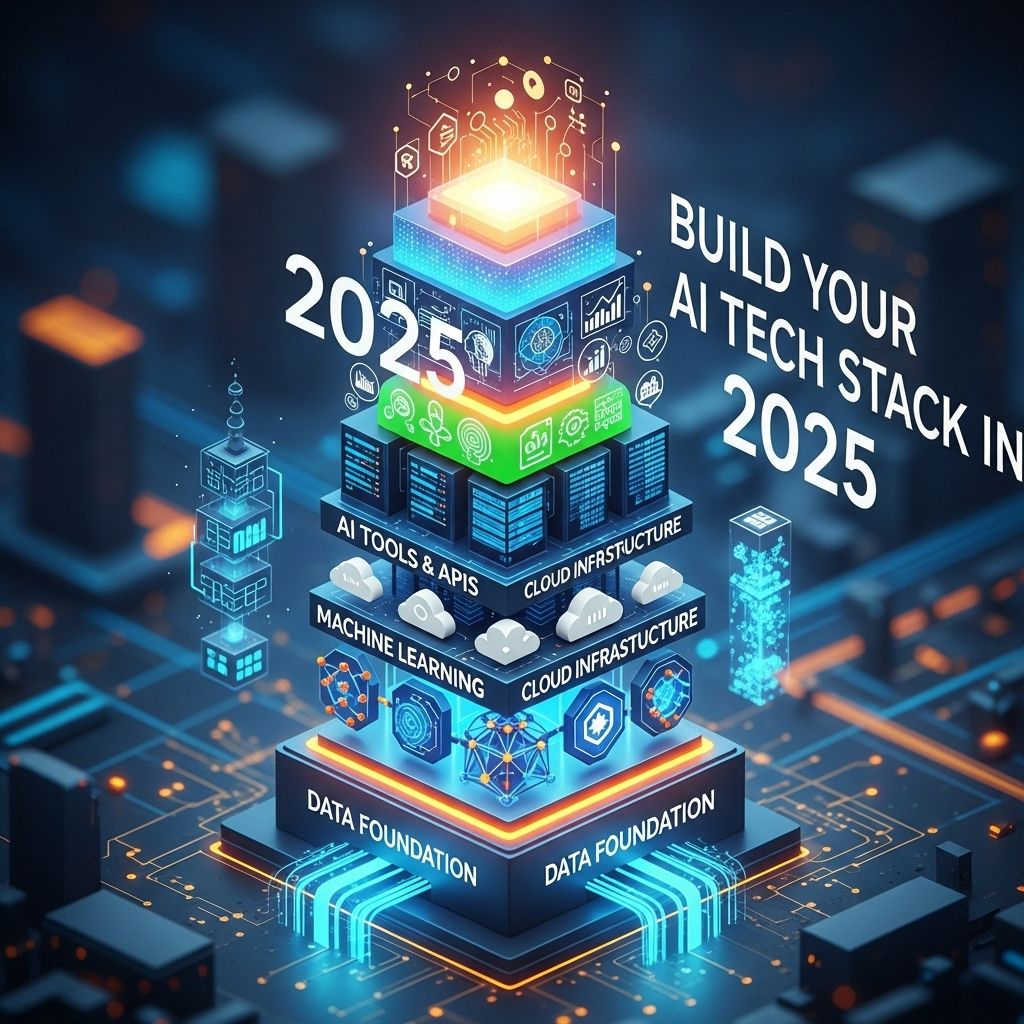As we dive deeper into the digital age, the integration of artificial intelligence (AI) in various sectors becomes ever more crucial. With 2025 just around the corner, organizations are gearing up to enhance their technological frameworks to leverage AI’s full potential. A robust AI tech stack is essential for businesses to stay competitive, innovative, and efficient. This article explores the essential components and trends to consider when building your AI tech stack for 2025.
Table of Contents
The Importance of a Robust AI Tech Stack
In today’s fast-paced environment, being able to process data efficiently and derive actionable insights is key. A strong AI tech stack allows companies to:
- Enhance Decision-Making: By utilizing predictive analytics and machine learning algorithms, organizations can make data-driven decisions.
- Boost Efficiency: Automating routine tasks helps free up human resources for more strategic roles.
- Improve Customer Experience: AI-powered chatbots and personalization algorithms can significantly enhance user interactions.
To achieve these benefits, companies need to carefully consider their technology choices and integrate them seamlessly.
Components of an Effective AI Tech Stack
Building an AI tech stack involves selecting tools and platforms that work cohesively together. Here are the crucial components you should consider:
1. Data Management
Data is the foundation of any AI initiative. Proper data management tools make it easier to collect, store, and analyze vast amounts of information.
| Data Management Tool | Description |
|---|---|
| Apache Hadoop | A framework for distributed storage and processing of big data. |
| Google BigQuery | A serverless data warehouse that enables super-fast SQL queries. |
| AWS S3 | Object storage built to store and retrieve any amount of data from anywhere. |
2. Machine Learning Frameworks
Selecting the right machine learning frameworks is vital for model development. Some popular options include:
- TensorFlow: An open-source library for numerical computation that makes machine learning faster.
- PyTorch: A flexible deep learning framework that provides strong GPU acceleration.
- Scikit-Learn: A library for simple and efficient tools for data mining and data analysis.
3. Deployment Platforms
Once models are built, deployment platforms facilitate their integration into production:
- Docker: Allows developers to package applications into containers, ensuring consistency across different environments.
- Kubernetes: An orchestration tool for managing containerized applications across a cluster of machines.
- Amazon SageMaker: A fully managed service that allows developers to build, train, and deploy machine learning models quickly.
Emerging Trends to Watch
As you plan your AI tech stack, it’s essential to stay ahead of the curve. Here are some trends expected to shape AI technologies in 2025:
1. Explainable AI (XAI)
As organizations rely more on AI for decision-making, the need for transparency increases. Explainable AI aims to make AI systems more interpretable for users. This trend will shape how organizations communicate AI decisions, ensuring ethical and responsible usage.
2. Federated Learning
This innovative approach allows algorithms to learn from data across multiple decentralized devices without transferring data itself. This trend prioritizes user privacy and minimizes the risks associated with data breaches.
3. AI Ethics and Governance
With the rapid adoption of AI technologies comes the need for clear ethical guidelines. Companies in 2025 will need to implement governance frameworks that address bias, accountability, and data privacy issues.
Strategic Implementation Steps
Building an effective AI tech stack requires a strategic approach. Here are steps to guide your implementation:
- Assess Current Infrastructure: Determine what tools and technologies you currently have and where the gaps are.
- Define Business Objectives: Clearly outline what you aim to achieve through AI, whether it’s cost reduction, customer engagement, or operational efficiency.
- Choose the Right Tools: Based on your objectives and current infrastructure, select the appropriate tools and platforms.
- Build a Skilled Team: Ensure your team has the necessary skills in data science, machine learning, and software development.
- Iterate and Improve: Monitor the performance of your AI initiatives and make adjustments as needed to improve outcomes.
Conclusion
As we approach 2025, building a comprehensive AI tech stack will be pivotal for organizations looking to harness the transformative power of artificial intelligence. By focusing on the right components, keeping an eye on emerging trends, and implementing strategically, businesses can not only keep pace but also lead in their respective industries. The future of AI is bright, and those prepared to invest in their tech stack will undoubtedly reap significant rewards.
FAQ
What is an AI tech stack?
An AI tech stack is a combination of technologies, tools, and frameworks used to develop and deploy artificial intelligence applications.
Why is it important to build an AI tech stack?
Building a robust AI tech stack is crucial for efficiently managing data, training models, and integrating AI capabilities into applications, ensuring better performance and scalability.
What key components should be included in an AI tech stack for 2025?
An effective AI tech stack in 2025 should include data processing tools, machine learning frameworks, cloud services, and API management systems.
How can I choose the right tools for my AI tech stack?
Selecting the right tools involves assessing your project requirements, budget constraints, team expertise, and the specific AI use cases you aim to address.
What are the emerging trends in AI tech stacks for 2025?
Emerging trends include increased use of autoML, edge computing for real-time processing, and enhanced focus on ethical AI and data privacy.









